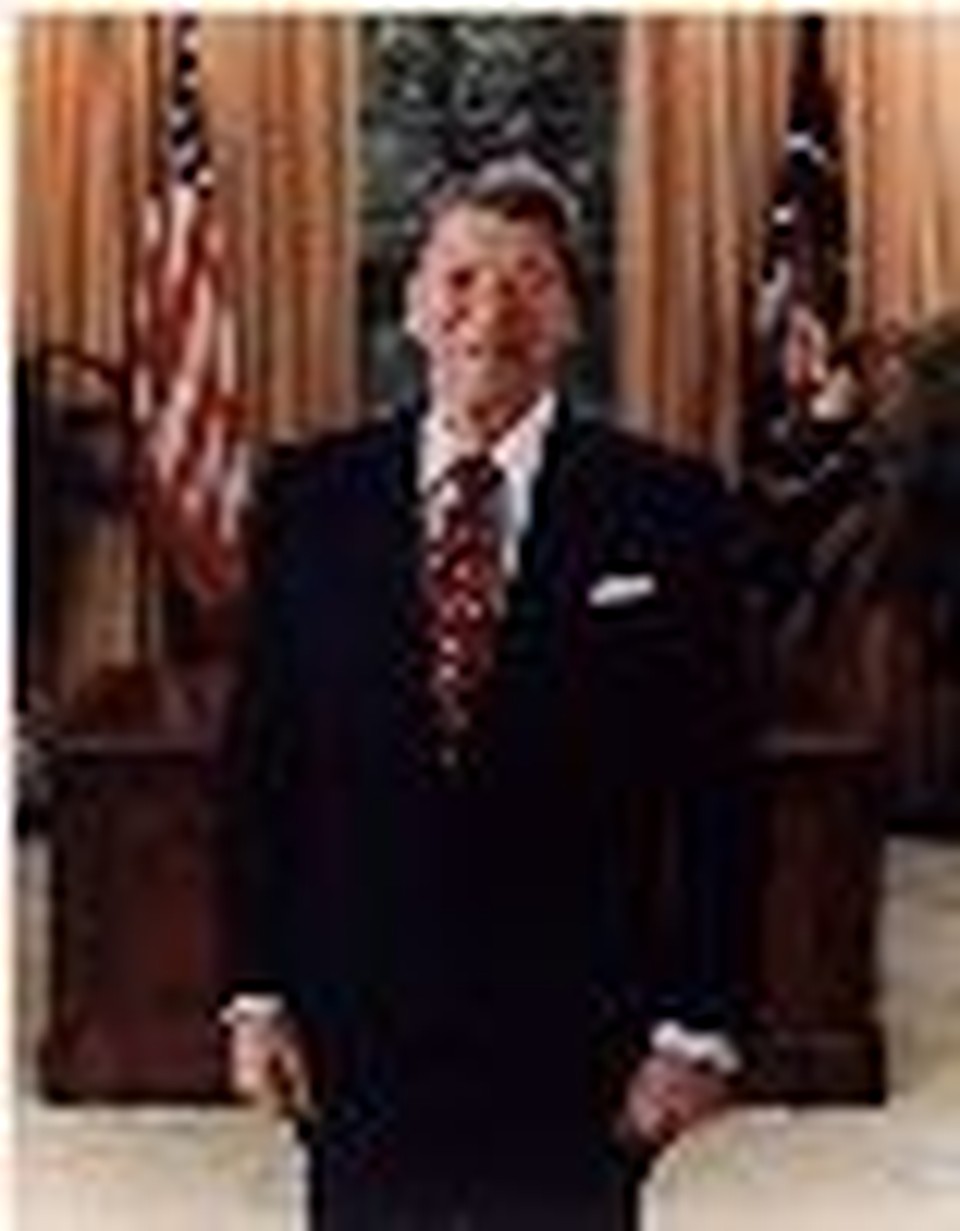Ronald Reagan's Rainbow

Ronald Reagan was a man who had it all. It is difficult to identify an American who lived a fuller, or greater, life—what he understatedly called "An American Life." In nearly everything he did, Reagan succeeded wildly. When he left his parents’ home in 1932, he landed a coveted job in radio. Then came the movies and television, in the heyday of each medium. In the 1930s, when most of America suffered, Reagan soared.
By the 1940s, he was one of the top box office draws in Hollywood and received more fan mail than any actor at Warner Brothers except Errol Flynn. His hosting of the number-one rated television show GE Theatre from 1954 to 1962 made him one of the most recognized names in America.
Of course, after that, he entered politics and twice won the governorship of the nation’s largest state and the presidency of the world’s most powerful nation. And I’m certain that his epitaph will be that he was the president who won the Cold War.
Where did this record of achievement begin? It started with humble origins: at the Rock River at Lowell Park in Dixon, Illinois, where a teenage Reagan lifeguarded seven days a week, 10 to 12 hours per day, for seven summers. He was the rock at the Rock River, always watching. He saved the lives of 77 people there: "One of the proudest statistics of my life," he said later. Saving a drowning victim is not easy under any circumstance, but it was especially difficult in the treacherous Rock River, where the swirling water is so deep and murky that swimming there today has long been banned.
Still, the job was a labor of love for Reagan. "My beloved lifeguarding," he later called it. Even when Alzheimer’s meant he couldn’t recognize his closest friends when they visited him in his Los Angeles office in the 1990s, Reagan could point to the painting on his wall, a colorful illustration of the spot where he patrolled the Rock River, and longingly reminisce.
On November 5, 1994, Ronald Reagan handwrote a letter informing the world that Alzheimer’s disease was riding him into “the sunset of my life.” That choice of words was astonishing: Alzheimer’s is a horrific disease that robs memories. In just a few years, Reagan wouldn’t even remember the White House.Of course, after that, he entered politics and twice won the governorship of the nation’s largest state and the presidency of the world’s most powerful nation. And I’m certain that his epitaph will be that he was the president who won the Cold War.
Where did this record of achievement begin? It started with humble origins: at the Rock River at Lowell Park in Dixon, Illinois, where a teenage Reagan lifeguarded seven days a week, 10 to 12 hours per day, for seven summers. He was the rock at the Rock River, always watching. He saved the lives of 77 people there: "One of the proudest statistics of my life," he said later. Saving a drowning victim is not easy under any circumstance, but it was especially difficult in the treacherous Rock River, where the swirling water is so deep and murky that swimming there today has long been banned.
Still, the job was a labor of love for Reagan. "My beloved lifeguarding," he later called it. Even when Alzheimer’s meant he couldn’t recognize his closest friends when they visited him in his Los Angeles office in the 1990s, Reagan could point to the painting on his wall, a colorful illustration of the spot where he patrolled the Rock River, and longingly reminisce.
On November 5, 1994, Ronald Reagan handwrote a letter informing the world that Alzheimer’s disease was riding him into “the sunset of my life.” That choice of words was astonishing: Alzheimer’s is a horrific disease that robs memories. In just a few years, Reagan wouldn’t even remember the White House.
So, how could Reagan, obviously knowledgeable of Alzheimer’s, describe the onset of his disease as a coming sunset? I’ve watched sunsets on the California coast, indeed from the very “Ranch in the Sky” that Reagan did. The answer was Reagan’s secret weapon: his optimism. He called it an eternal optimism, a “God-given optimism.”
He first discovered that gift through his mother, Nelle Reagan, who (along with Nancy) was the most important person in his life. Nelle instilled in her son the Christian faith so fundamental to his very being. She taught him that the twists and turns in the road are there for a reason. The bad things are part of “God’s plan” for the good. There is a rainbow waiting around the bend. God, Reagan reasoned, was in control and worked everything for the best.
Reagan preached this theology in his memoirs and in countless private letters that today sit in the Reagan Library. It became a kind of grief ministry. He would write to a widow: It’s a tragedy that your husband died and I write to send my deepest condolences; if it’s any comfort, God has a plan…
When our fellow passes on?
He’s just exchanged life’s dreary dirge
For an eternal life of song.
www.gcc.edu
Originally published June 11, 2004.







